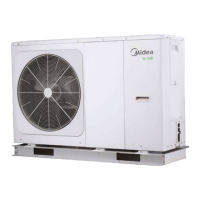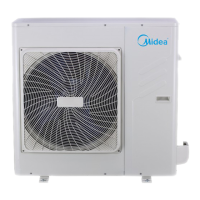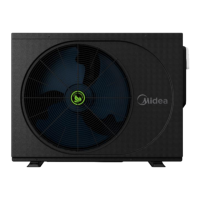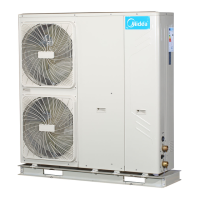31
Be careful not to deform the unit’s piping by
using excessive force when connecting the
piping. Deforming the piping can cause the unit
to malfunction.
CAUTION
9.4.3 Water circuit connection
Water connections must be made correctly in
accordance with labels on the outdoor unit, with respect
to the water inlet and water outlet.
Use clean pipes only.
Hold the pipe end downwards when removing burrs.
Cover the pipe end when inserting it through a wall to
prevent dust and dirt entering.
Use a good thread sealant for sealing the
connections. The sealing must be able to withstand
the pressures and temperatures of the system.
When using non-copper metallic piping, be sure to
insulate two kind of materials from each other to
prevent galvanic corrosion.
If air, moisture or dust gets in the water circuit, problems
may occur. Therefore, always take into account the
following when connecting the water circuit:
For copper is a soft material,
use appropriate tools for
connecting the water circuit.
Inappropriate tools will cause
damage to the pipes.
NOTE
Never use Zn-coated parts in the water
circuit. Excessive corrosion of these parts
may occur as copper piping is used in the
unit's internal water circuit.
When using a 3-way valve in the water circuit.
Preferably choose a ball type 3-way valve to
guarantee full separation between the
domestic hot water and floor heating water
circuit.
When using a 3-way valve or a 2-way valve in
the water circuit. The recommended
maximum changeover time of the valve
should be less than 60 seconds.
The unit is only to be used in a closed water
system. Application in an open water circuit can
lead to excessive corrosion of the water piping:
9.4.4 Water circuit anti-freeze protection
All internal hydronic parts are insulated to reduce heat
loss. Insulation must also be added to the field piping.
The software contains special functions using the heat
pump and backup heater (if it is aviliable) to protect the
entire system against freezing. When the temperature of
the water flow in the system drops to a certain value, the
unit will heat the water, either using the heat pump, the
electric heating tap, or the backup heater. The freeze
protection function will turn off only when the temperature
increases to a certain value.
In event of a power failure, the above features would not
protect the unit from freezing.
Water may enter into the flow switch and cannot be drained
out and may freeze when the temperature is low enough.
The flow switch should be removed and dried, then can be
reinstalled in the unit.
CounterclockWise rotation, remove the flow switch.
Drying the flow switch completely.
NOTE
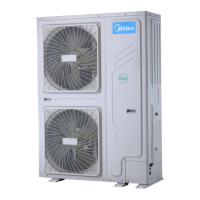
